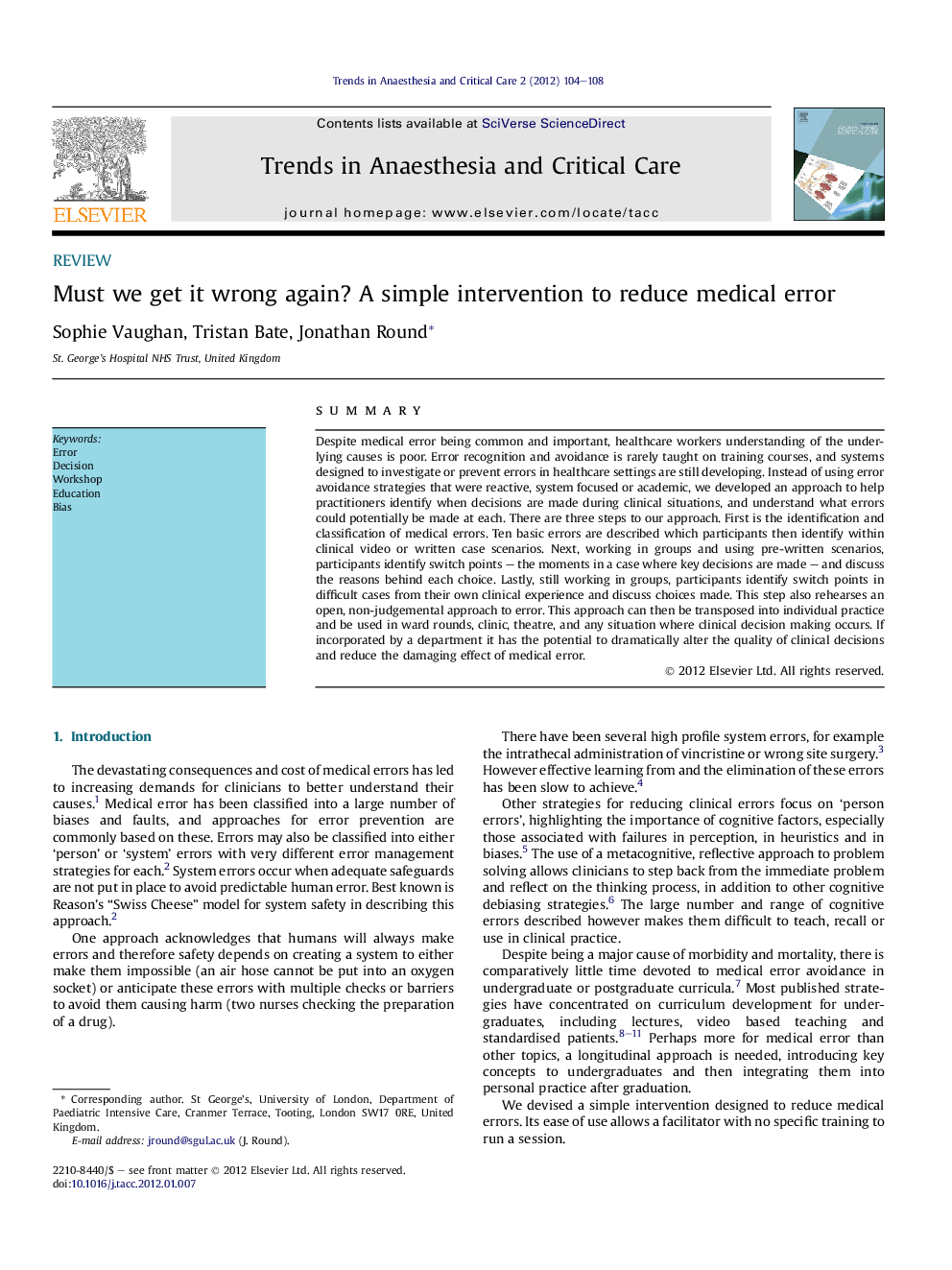| Article ID | Journal | Published Year | Pages | File Type |
|---|---|---|---|---|
| 2772636 | Trends in Anaesthesia and Critical Care | 2012 | 5 Pages |
SummaryDespite medical error being common and important, healthcare workers understanding of the underlying causes is poor. Error recognition and avoidance is rarely taught on training courses, and systems designed to investigate or prevent errors in healthcare settings are still developing. Instead of using error avoidance strategies that were reactive, system focused or academic, we developed an approach to help practitioners identify when decisions are made during clinical situations, and understand what errors could potentially be made at each. There are three steps to our approach. First is the identification and classification of medical errors. Ten basic errors are described which participants then identify within clinical video or written case scenarios. Next, working in groups and using pre-written scenarios, participants identify switch points – the moments in a case where key decisions are made – and discuss the reasons behind each choice. Lastly, still working in groups, participants identify switch points in difficult cases from their own clinical experience and discuss choices made. This step also rehearses an open, non-judgemental approach to error. This approach can then be transposed into individual practice and be used in ward rounds, clinic, theatre, and any situation where clinical decision making occurs. If incorporated by a department it has the potential to dramatically alter the quality of clinical decisions and reduce the damaging effect of medical error.
